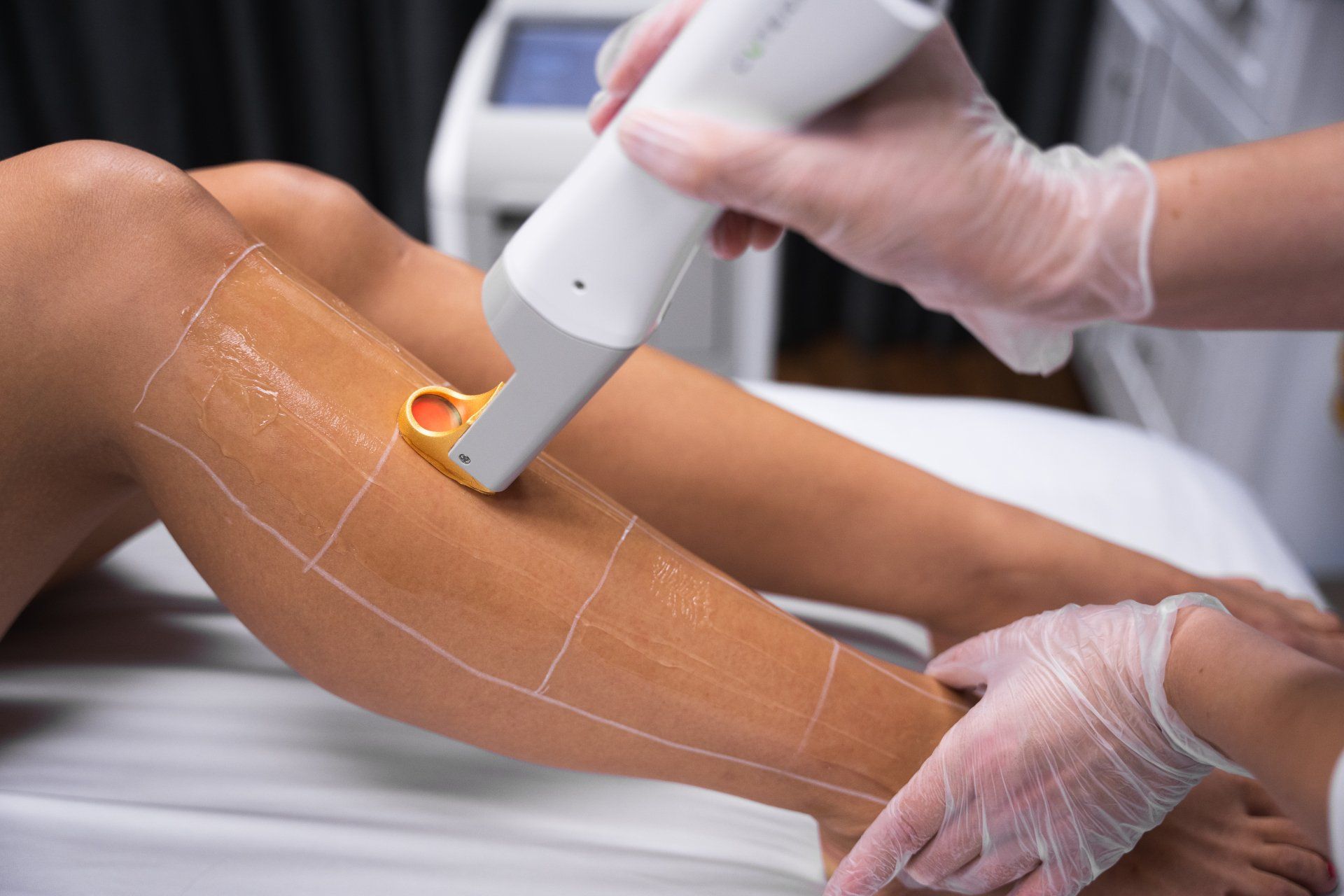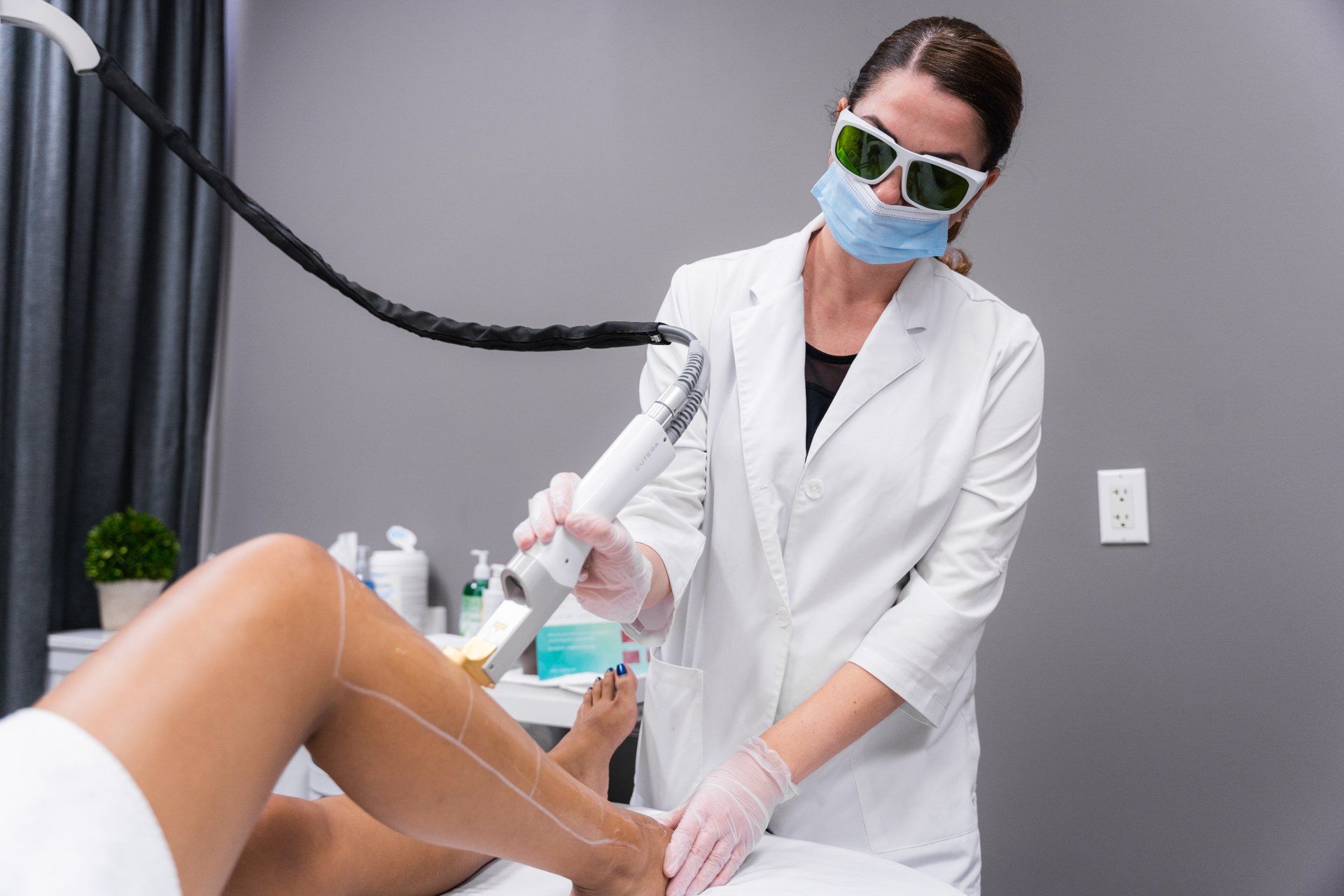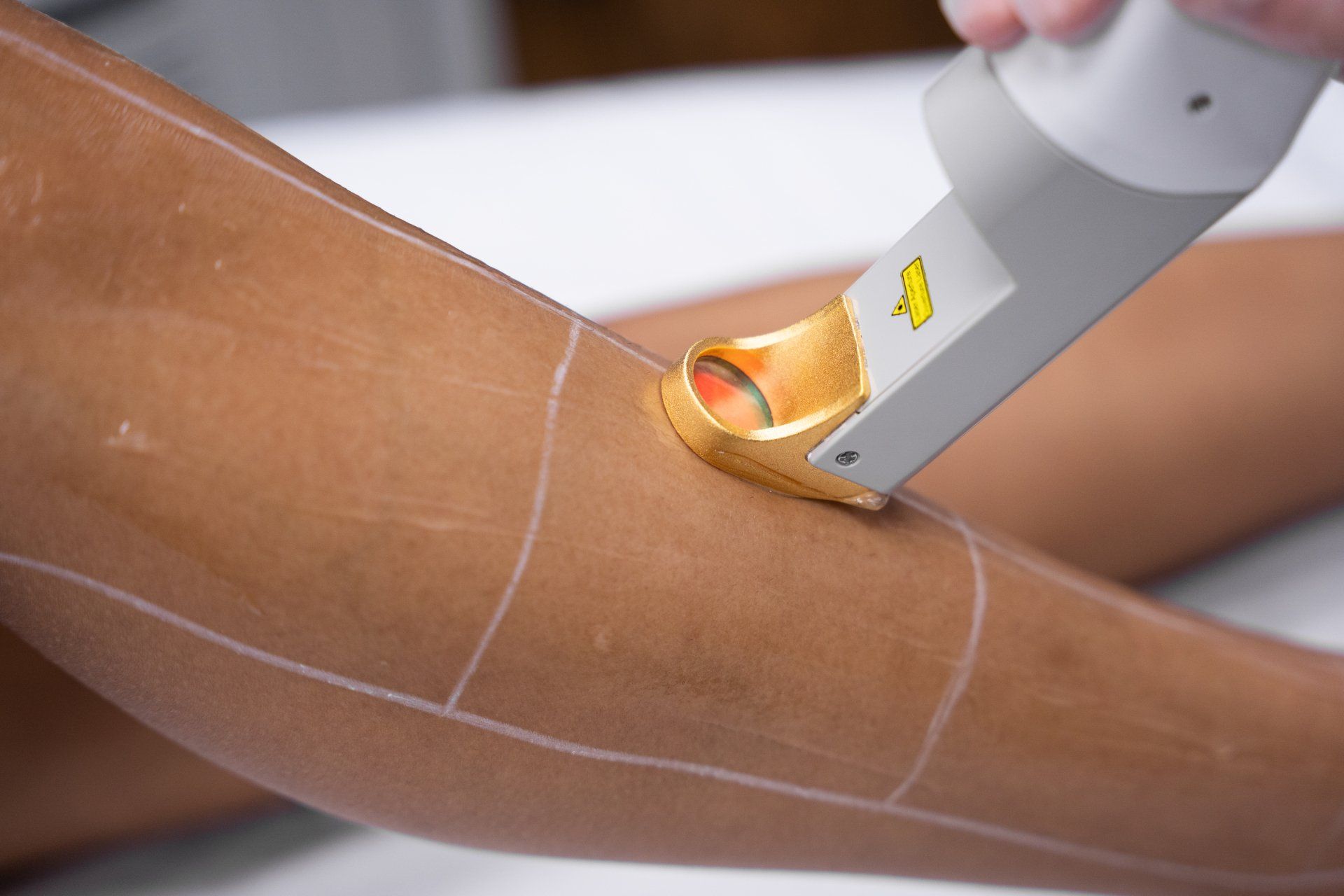Laser Hair Removal
The Cutera laser technology is a safe and effective non-surgical method of permanent hair reduction.
We use the Cutera excel® HR laser and the Cutera XEO+ which are designed for all skin and hair types. These are arguably the best technology available today.
Unlike older technologies that use low-powered energy sources or non-optimal laser wavelengths, these devices use the ideal wavelengths and technology to achieve the safest, most effective results for patients of all skin types.
Both utilize sapphire contact cooling to provide continuous cooling, maximizing your comfort and treatment safety.
How Laser Hair Removal Works
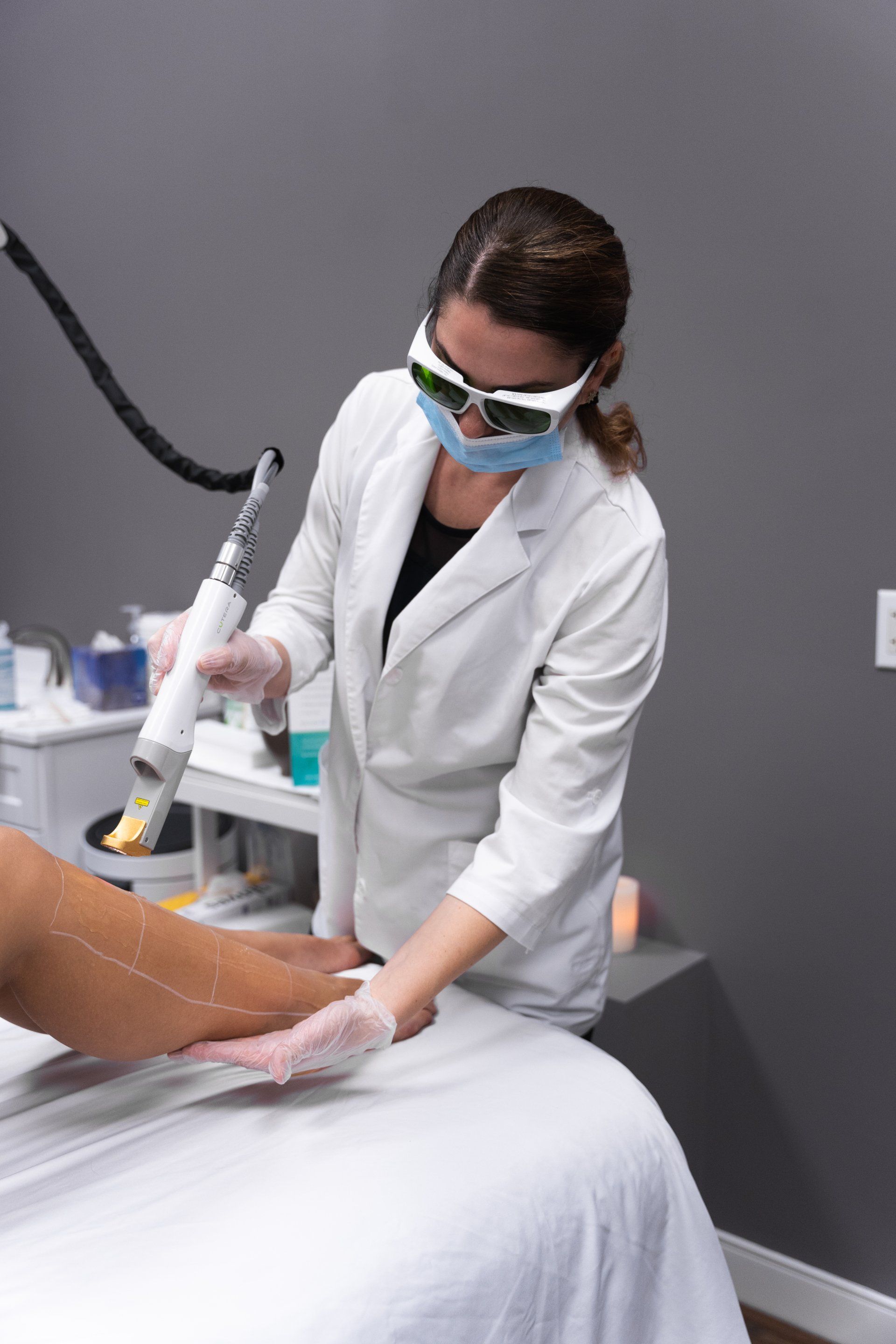
Once our laser technician completes the careful evaluation of your unique conditions, the laser's wavelength is set to a custom value to complement your skin and hair type, minimizing irritation and adverse side effects.
The beam of light from the laser is attracted to the pigment (melanin) in hair follicles. As the light gets absorbed by the hair follicle, the heat is created which weakens the follicle. After a few treatments, the follicles are weakened to the point of becoming inactive.
Since hair growth occurs in phases, not all follicles produce melanin at the same time. Therefore, multiple sessions are needed, spaced a few weeks apart, in order to treat all of the hair follicles in the target area during their active growth phases.
After 6-12 sessions, scheduled 4-12 weeks apart, more than 80% of the hair follicles in the target area will no longer produce hair. The remaining follicles will produce hair that is much lighter and finer.
Please note that white, gray, and blonde hairs indicate the absence of melanin and are impossible to treat with laser. Red hairs respond only partially and are considered too light to be effectively treated with lasers.
To ensure the best results possible, we offer a free consultation.
No two bodies are the same, so we take pride in delivering a safe and highly customized laser experience.
Treatment Types

FACE
Chin, Cheeks, Ears, Forehead,
Full Face, Hairline, Neck, Upper Lip

BODY
Abdomen, Areola, Back, Bikini Line, Brazilian, Buttocks, Chest, Arms, Legs, Feet, Back, Hands, Shoulders, Underarms
Getting Started

1. Receive Test Patch
During your free consultation, you'll receive a spot test in an inconspicuous area. This will help us determine the appropriate level of laser intensity for your treatments.

2. Wait 24 - 48 Hours
To make sure you don't have any adverse reactions to the laser, we recommend waiting 24 – 48 hours before beginning any additional treatment.

3. Book Treatments
Once we've confirmed you're a good candidate for laser hair removal you can begin booking sessions for your treatment!
Laser Hair Removal FAQ
What is Laser Hair Removal & how does it work?
In its simplest forms, the goal of laser hair removal is to selectively heat a target (hair) to the point of destruction without damaging the surrounding tissue (skin). Lasers work by delivering an intense beam of light that is absorbed by the skin. This light is converted to heat and is absorbed by the hair follicles, while leaving the skin unaffected. By repetitively hitting the hair follicles over a course of several treatments, typically 6-12, around 80+% of the follicles will be disabled to the point that they can no longer produce hairs.
Does it hurt?
Some guests may feel a slight discomfort with each laser pulse, sometimes described as the snapping of a rubber band on the skin. This discomfort resolves in several seconds. Pain threshold, as many other biological responses, varies from individual to individual. For the sensitive guests, we strive to make their treatment as comfortable as possible by either using lower settings, slower pulsing rate, or by breaking up long treatments into several shorter appointments.
How many treatments will I need?
On average, most areas can be effectively treated in 6-12 treatments, spaced 4 to 12 weeks apart, depending on the area of the body that is being treated. Usually faces are treated in shorter intervals, while body areas are typically treated in longer intervals. This may vary from person to person depending on many factors, such as genetics, darkness and thickness of the targeted hairs, laser intensities used on the treatment, medications/supplements being used and pre-existing medical conditions. Therefore, some guests may respond to less than 6 treatments per area, while others may require more. Some medications and fitness supplements may contribute to increased hair growth, as may some pre-existing medical conditions.
Why do I need more than one treatment?
Hair growth occurs in three phases. At any one time, there will be several hair follicles in each of the different phases. The laser used for hair removal works by treating follicles that are in the active growth phase because there is an abundance of melanin to attract the laser. After a series of 6-12 treatments spaced 4-12 weeks apart, more than 80% of the hair follicles will have been treated during consecutive growth phases and they will be weakened to the point of being incapable of producing hair. The remaining percentage of follicles will produce hair that is lighter in color and much finer.
How long will my treatment be?
Larger areas such as arms, back, chest, legs, will take 1 hour for each session. Smaller areas such as the face, chin, lip, neck, bikini line will take 15-30 minutes for each session.
What side effects should I expect following my treatment?
Immediately following a laser treatment, guests may experience redness, bumpiness, and warmth on the skin (similar to the sensation of having a strong sunburn). This reaction is absolutely normal and is termed “follicular edema”. This is the desired endpoint of a laser hair removal session. This effect may disappear in a few minutes or over the course of up to 8 hours, depending on the person. During your free consultation, we will treat only a small test patch on an inconspicuous area of the body, and then wait a few days just to make sure you will not have any adverse reactions. Other side effects may include temporary itching or discoloration (hyper or hypopigmentation) of the skin in the treated area. Although rare, there is a risk of burning and scarring. A very rare response is potential stimulation of new hair follicles.
Is it safe?
Laser and light-based treatments have been proven safe and effective for many years for a variety of medical and cosmetic procedures. We provide all guests with special goggles that protect the eyes from the laser light. We do not treat anyone with a contra-indication such as guests who are pregnant or nursing, have active infections, are currently taking Accutane or other medications that can increase photosensitivity (such as certain antibiotics or antidepressants). During the span of treatments, guests are requested to abstain from UV exposure and self/spray tanning. When UV exposure is unavoidable, guests are strongly advised to use a strong sunblock and apply it often.
Which body parts can be lasered?
Virtually any area where hair exists can be lasered. Guests usually start with one area but end up adding other areas as well, since they love the results so much! For women, the most popular area is generally the Brazilian, followed at a close second by underarms and legs. Men typically choose the back and/or chest, but a popular trend is using laser hair removal to clean up the back of their necks, the face and beard. Laser treatments can prevent in-grown hairs or shaving bumps as well as thin out a heavy beard. Some men choose laser treatments to remove or thin out the hair on their underarms, hands, knuckles and forearms to make those areas more esthetically pleasing.
How much will it cost?
We offer pricing either for single treatments or for a series of treatments. The average number of treatments a client will need is 6-12. We offer up to a 20% discount on packages of 6 or more treatments. After your complimentary consultation and test patch, we will determine and customize the optimum treatment plan at very competitive pricing.
How does laser compare to waxing?
In terms of effectiveness and discomfort, laser offers permanent hair reduction with minimal discomfort. After the recommended course of 6-12 sessions, over 80% of the hair will not grow back while the remaining 20% (or less) will become lighter and finer. Waxing temporarily removes hair, but it will grow back – sometimes in as little as three weeks. With regular waxing sessions, the hair may become lighter and finer, but you will not achieve permanent reduction. Most people find that waxing is more painful than laser. although there are not as many contra-indications as there are with laser. Also, waxing is an option for those who are not the best candidates for laser – such as people with white, gray, blond, or red hair.
Cost-wise, on a per-session basis, waxing is less expensive than laser. However, since waxing has no “end point” since hair will always regrow, and the cost of sessions will be an ongoing expense. Over the course of 10 years, the average cost of waxing appointments will be thousands more than the initial investment in a series of laser treatments. Laser costs more initially, but it is more cost effective in the long run.
This is not to say that laser is always a better option than waxing. There are some contra-indications for laser, such as pregnancy and certain medications, that make waxing a better option for some. Also, for people who have white, gray, blond, or red hair, waxing is more effective than laser.
Who is not considered a good candidate for Laser Hair Removal?
Laser hair reduction works best with very dark and/or very coarse hairs. White, gray, and blonde hairs indicate the absence of melanin and are impossible to treat with laser. Red hairs respond only partially and are considered too light to be effectively treated with lasers. It is possible to see different response rates on different body parts of the same guest. For example, a guest may get 80+% reduction on underarms and Brazilian, but around 40-50% reduction on her forearms, if those hairs are much finer than bikini and underarm hairs.
Guests with hormonal abnormalities can use laser hair reduction as a tool to manage hair growth but should be warned that continued treatments will be needed unless the abnormalities are corrected. Other androgen-affecting medical conditions will have the same outcome for both men and women, so it is important to take these into consideration. Certain medications and fitness supplements may increase hair growth and may adversely affect or prolong the number of sessions required to achieve one’s goals in hair reduction. All factors are taken into careful consideration before any treatment regime is determined.

